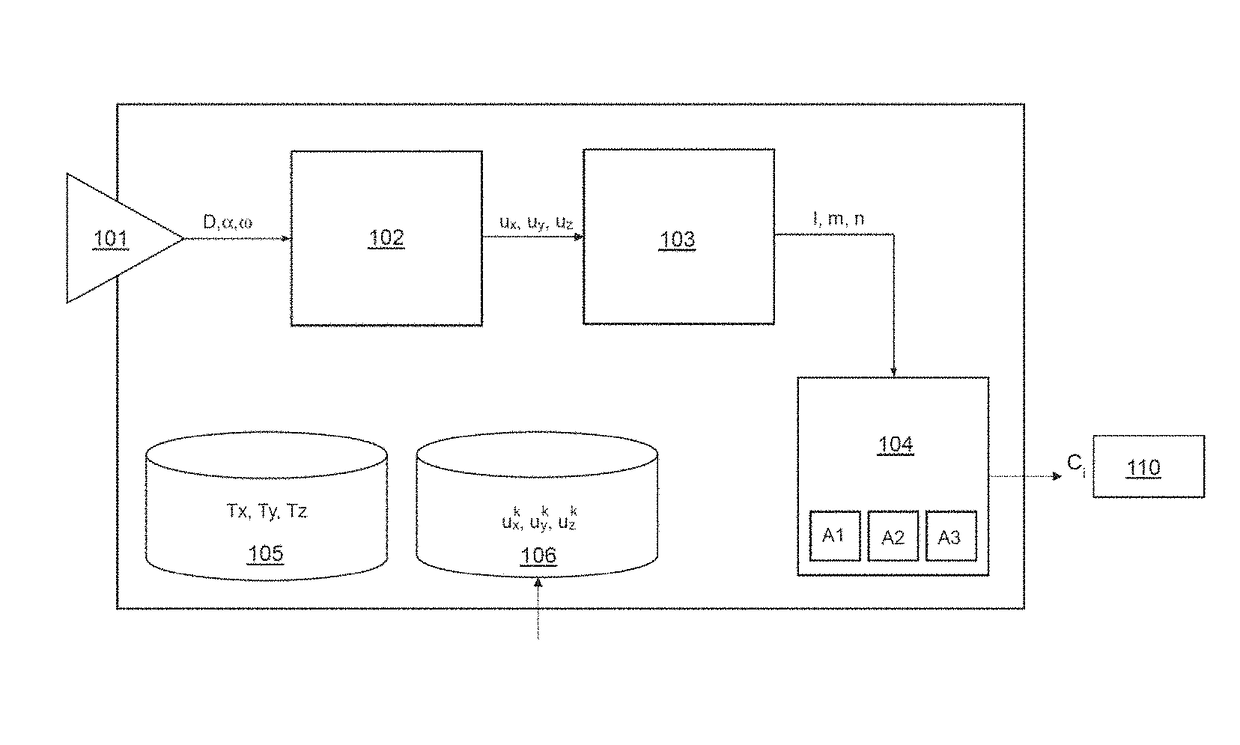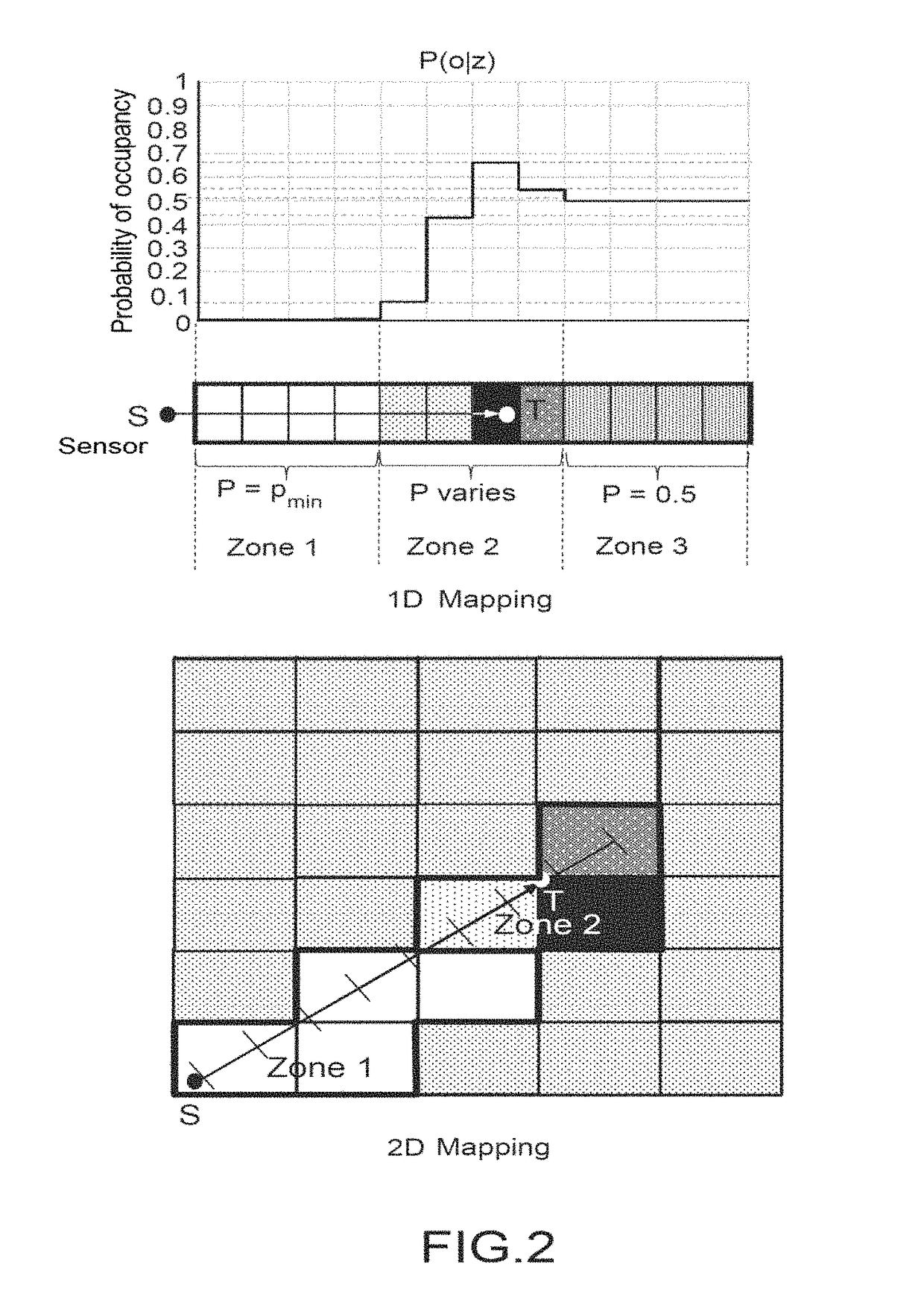Method and system for determining cells traversed by a measuring or visualization axis
a technology of determining cells and axis, applied in the field of methods and systems for determining cells situated on axis, can solve the problems of scheme not explaining how to solve the problem of mapping 2d or 3d, computational need explodes, and cannot solve the problem of 2d or 3d mapping problem, etc., to achieve less constraining of computational architecture and ensure precision
- Summary
- Abstract
- Description
- Claims
- Application Information
AI Technical Summary
Benefits of technology
Problems solved by technology
Method used
Image
Examples
Embodiment Construction
[0083]In order to better elucidate the subject of the invention, the example which follows is given by way of wholly nonlimiting illustration for the detection of obstacles in the case of a car equipped with a camera making it possible to detect obstacles that may be present on its path.
[0084]The occupancy grids are a discretization of the observed space into cells. The mapping of “mono-target” sensor information makes it necessary to be able rapidly to find the cells traversed by a straight line.
[0085]Let S(xS,yS) be the position of the sensor situated on the car, and F(xF,yF) the target detected by the sensor. The cells traversed by the segment [SF] must undergo an occupancy update. The point M(x,y) is on the line containing the segment [SF] if and only if:
Err(M)=(y−ys)·(xF−xS)−(x−xs)·(yF−ys)=0
[0086]It may then be noted that if two points A and B are situated on either side of the line, then we obtain Err(A) and Err(B) with opposite signs. This property makes it possible to deduce...
PUM
 Login to View More
Login to View More Abstract
Description
Claims
Application Information
 Login to View More
Login to View More - R&D
- Intellectual Property
- Life Sciences
- Materials
- Tech Scout
- Unparalleled Data Quality
- Higher Quality Content
- 60% Fewer Hallucinations
Browse by: Latest US Patents, China's latest patents, Technical Efficacy Thesaurus, Application Domain, Technology Topic, Popular Technical Reports.
© 2025 PatSnap. All rights reserved.Legal|Privacy policy|Modern Slavery Act Transparency Statement|Sitemap|About US| Contact US: help@patsnap.com



